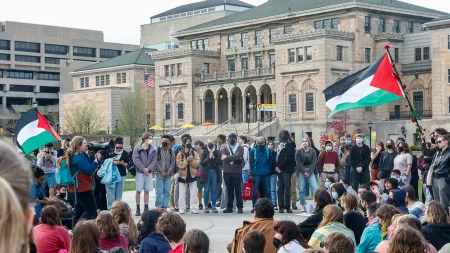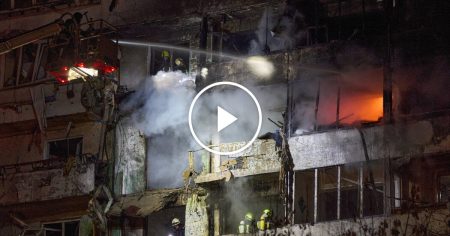Trapped in Uncertainty: Gaza Residents Face Impossible Evacuation Choices Amid Escalating Conflict
Safety Nowhere: The Dilemma of Displacement in Gaza’s Humanitarian Crisis
In the pre-dawn hours, as military aircraft circled overhead, text messages and phone calls flooded into thousands of mobile devices across northern Gaza. The directive was clear but devastating: evacuate immediately. For the third time in the ongoing conflict, Israel has ordered a mass evacuation of civilians from Gaza City and surrounding areas, instructing hundreds of thousands of Palestinians to relocate southward to what authorities have designated as “humanitarian zones.” But for many residents, the order presents an impossible choice between dangerous movement across active combat zones and remaining in areas targeted for intensified military operations. “Where exactly should we go?” asked Mahmoud Khalil, a 43-year-old father of four who has already been displaced twice since the conflict began. “We fled north when they bombed the south, then east when they targeted the west. Now they tell us the south is safe again, but we’ve heard those promises before.”
International aid organizations have expressed grave concerns about the practicality and humanitarian implications of such large-scale population movements in a territory already devastated by months of conflict. The Gaza Strip, home to approximately 2.3 million people and one of the most densely populated areas in the world, has seen its infrastructure severely compromised. Critical shortages of fuel, medical supplies, clean water, and food have created conditions that humanitarian officials describe as “catastrophic.” Dr. Sarah Levin, an emergency response coordinator with Médecins Sans Frontières (Doctors Without Borders), explained the medical reality: “Moving vulnerable populations—including the elderly, wounded, pregnant women, and those with chronic conditions—across active conflict zones represents a significant risk to their health and survival. The healthcare system in Gaza was already overwhelmed before this latest evacuation order. Now we’re seeing patients discharged prematurely or left with no medical support as facilities close or relocate.” The few hospitals still partially operational in southern Gaza lack the capacity to absorb thousands of additional patients, creating a healthcare vacuum that leaves the most vulnerable with nowhere to turn.
Contested Spaces: The Shrinking Geography of Safety
The southern areas designated as safe zones have themselves been subject to military operations and airstrikes in recent weeks, fueling deep skepticism among Gazans about whether any location in the territory can truly be considered secure. Satellite imagery analyzed by humanitarian monitoring groups shows significant destruction in areas previously designated as safe, including damage to schools and other facilities serving as makeshift shelters for those already displaced. “We’re being told to go to places where others are fleeing from,” said Samira Deeb, a 35-year-old teacher who has been sheltering in a UN school with her three children since their apartment building was destroyed last month. “My cousin went south after the first evacuation order. Last week, the building he was staying in was hit. He survived, but two of his children didn’t.” This grim reality has left many Gazans concluding that the evacuation orders offer not safety but merely a different form of danger.
The geographic constraints of the Gaza Strip—roughly 25 miles long and between 3.7 and 7.5 miles wide—mean that options for internal displacement are severely limited. With border crossings heavily restricted and maritime access blocked, the territory has been described by human rights observers as “an open-air prison with no exits.” This containment creates a situation where population movements result in extreme overcrowding in the designated areas. Humanitarian officials estimate that some parts of southern Gaza are now hosting four to five times their pre-conflict population, with multiple families crowded into single apartments or makeshift tents erected on formerly open spaces. Water and sanitation systems, already damaged by airstrikes, cannot support such population density, raising fears of disease outbreaks that could compound the humanitarian crisis. “We’re seeing the early signs of waterborne diseases in children,” warned Dr. Ahmed Moussa, a pediatrician working in Khan Younis. “With sewage systems damaged and clean water scarce, we’re sitting on a public health time bomb that could be as deadly as the bombing itself.”
The Human Cost: Individual Stories Behind the Statistics
Behind the numerical tallies of displacement lie thousands of individual human tragedies. For Fatima al-Najjar, a 72-year-old grandmother who has lived her entire life in Gaza City, the latest evacuation order meant abandoning the home where she raised three generations of her family. “Even during previous conflicts, I stayed in my house. It survived 2008, 2014, and 2021. Now I’m told I must leave or die there,” she said, her voice breaking as she gathered what few possessions she could carry. “How do I choose what to take from a lifetime of memories? My husband’s photos? My children’s birth certificates? Or just water and medicine to survive another week?” For younger residents, the repeated displacements have disrupted education and shattered any sense of normalcy. Sixteen-year-old Yusuf Bakr has missed his final school examinations due to the conflict. “I was preparing to study medicine,” he explained while helping his younger siblings gather their belongings. “Now I don’t know if our school still exists or when we might return to classes. My future feels as uncertain as where we’ll sleep tonight.”
The psychological impact of repeated displacement compounds the physical dangers. Mental health professionals working in Gaza report alarming rates of trauma-related symptoms, particularly among children who show signs of regression, nightmares, and behavioral changes. “Children need stability and predictability to develop properly,” explained Maryam Daoud, a psychologist working with a local aid organization. “These repeated evacuations and constant movement destroy their sense of safety and control. We’re seeing children who have stopped speaking or who can’t sleep without clinging to their parents. The psychological wounds may take longer to heal than the physical ones.” For adults, the strain of making impossible decisions about their families’ safety while managing their own fear and grief has led to widespread psychological distress. “I find myself unable to make even simple decisions now,” admitted Omar Suleiman, a 40-year-old construction worker and father of five. “When every choice could mean life or death for your children, and when there are no good options, something breaks inside you.”
International Response and Legal Questions
The evacuation orders have drawn scrutiny from international legal experts who question whether they meet the requirements of international humanitarian law. Under the Geneva Conventions, any party that evacuates civilians must ensure their safety during movement and provide adequate shelter, hygiene, health, nutrition, and family unity at their destination. “What we’re seeing raises serious legal concerns,” explained Dr. Elena Martínez, a professor of international humanitarian law at Geneva University. “Evacuation orders that don’t provide civilians with genuinely safer alternatives or the means to relocate safely may violate the prohibition against forced displacement.” United Nations officials have emphasized that even during armed conflict, certain fundamental protections for civilians cannot be suspended or ignored. “A safe place isn’t simply a place that hasn’t been bombed yet,” stated UN Human Rights Commissioner spokesperson Julian Weber. “It requires access to the essentials of life and reasonable assurance against future attack.”
Diplomatic efforts to address the humanitarian crisis have intensified, with several countries calling for temporary ceasefires to allow civilians to move safely and aid to enter the territory. However, progress has been limited, with disagreements about conditions and implementation hampering concrete action. Meanwhile, aid organizations report significant challenges in reaching vulnerable populations, particularly those caught in evacuation zones. “Our aid convoys have been delayed at checkpoints for hours or days, by which time the security situation has changed again,” reported International Red Cross coordinator Thomas Reiter. “The unpredictability makes it nearly impossible to plan effective aid distribution.” For Gaza’s civilians, caught between evacuation orders and the practical impossibility of finding true safety, each day brings new calculations of risk and diminishing options. As 29-year-old Amal Radwan, nursing her infant daughter in a crowded shelter, put it: “They tell us to leave to save our lives, but they’ve left us nowhere to live. This is not evacuation—it’s a cruel game of human chess where we are the pawns, moved around a board where every square is dangerous.”











